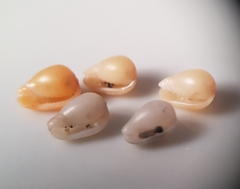Chiton
Polyplacophora
The Mollusca Polyplacophora, commonly known as chitons, are a fascinating class of marine mollusks found in the coastal areas of the Comunidad Valenciana, among other regions. These unique creatures are well adapted to life in the intertidal zone, often seen clinging to rocks or under boulders, where they graze on algae.
Here are some distinctive characteristics of Polyplacophora:
- Shell Structure: They are easily recognizable by their eight overlapping plates or valves that make up their shell. This segmented shell allows them to flex and curl up, providing protection and a tight grip on rocky surfaces.
- Body Shape: Polyplacophora have a flattened, oval-shaped body that helps them withstand wave action and resist being dislodged by the tide.
- Habitat: Typically found on rocky shores of the Mediterranean Sea, including areas along the Comunidad Valenciana. They thrive in the intertidal and subtidal zones.
- Feeding: These mollusks primarily feed on algae using their radula, a specialized feeding organ. They scrape rocks clean with this file-like tongue, leaving distinct feeding marks.
- Local Names: In some Spanish regions, including the Comunidad Valenciana, they might be referred to as "chiton" or "cochinilla de mar."
Chitons are an integral part of the marine ecosystem, contributing to the biodiversity and the ecological balance of the coastal habitats in this region.







